
cleanplate, l
(article, Kim Carlson)
When Jenn Louis, the chef and co-owner of the restaurant Lincoln in Portland, Oregon, suggested to her husband and co-owner David Welch that they put baked eggs on their menu, Welch wasn't so sure. Now, a couple of years and thousands of eggs later, he's no longer a disbeliever. [%image Jenn3 float=left width=300 caption="Jenn Louis"] "People love this dish," says Louis, who had faith in her eggs — an interpretation of the French classic oeufs en cocotte — from the start. "It's both comforting and sophisticated." I spent an hour recently with Louis in her restaurant kitchen, a clean and calm place that belied the busyness that would come later in the day. The chef — a caterer for many years before Lincoln opened in 2008 and, it should be noted, a semifinalist in the 2010 Beard Awards — poured herself a cup of coffee and set to work making us plates of eggs. First she gathered her ingredients: two eggs and two castelvetrano olives per serving; salt and pepper; cream; and bread crumbs. With a preparation this simple, the ingredients have to be top-notch. Louis buys the eggs of cage-free hens on a vegetarian diet for her restaurant. The giant green olives are available at some grocers (such as Whole Foods) and at specialty markets. Louis makes homemade toasted bread crumbs from dried bread and olive oil; for this dish, you'll want to do the same. Here's how Louis makes her baked eggs: |[%image eggs1 width=300 caption="She cracks two eggs into a gratin dish (or a ramekin), being careful not to break the yolks."]|[%image olives width=300 caption="Next, she adds olives. Louis prefers castelvetrano olives, but you can use others too."]| |[%image eggs2 width=300 caption="With her palm, Louis presses each olive into the counter to break it, then easily removes the pit. She then tears the olives into two or three pieces and sprinkles them around the eggs — two or more olives per dish."]|[%image cream width=300 caption="She salts and peppers the eggs and then pours cream in a sort of outline around them. Don't substitute half-and-half or milk, which are not thick enough to bind the eggs."]| |[%image oven1 width=300 caption="Louis places the eggs in a 350-degree convection oven (or a 375-degree regular oven), and sets the timer for three minutes."]|[%image oven2 width=300 caption="When the timer goes off, she checks the eggs, rotating them as necessary for even cooking, and sets the timer for three more minutes."]| |[%image seteggs width=300 caption="She removes the eggs when the whites are set, but the yolks still runny (they continue to cook after being removed from the oven)."]|[%image crumbs width=300 caption="Finally, Louis sprinkles a few tablespoons of fine, toasted bread crumbs over each serving."]| |[%image final width=300 caption="The finished product is best served piping hot."]|[%image cleanplate width=300 caption="It won't last long."]| p(bio). Kim Carlson is the co-founder of Culinate.

cleanplate, l
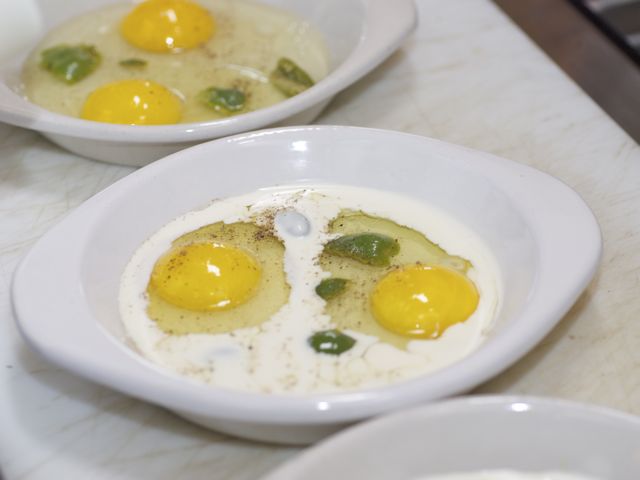
cream, l
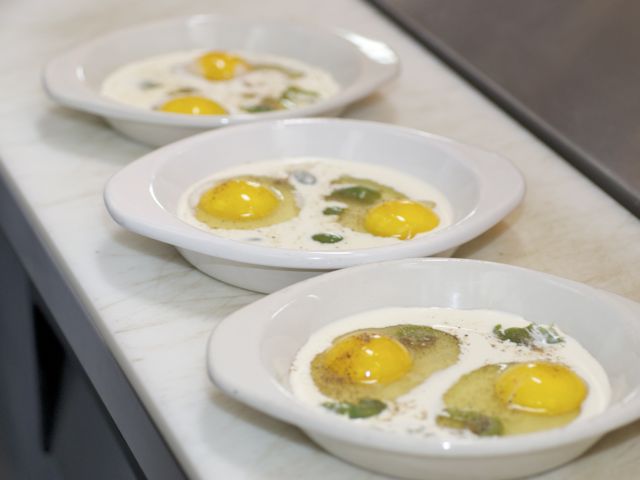
cream2, l

crumbs, l

eggs1, l

eggs2, l

olives, l

oven1, l

oven2, l
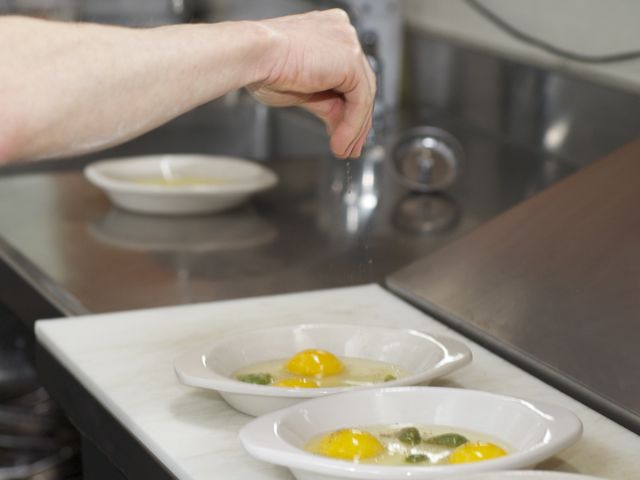
salt, l

seteggs, l
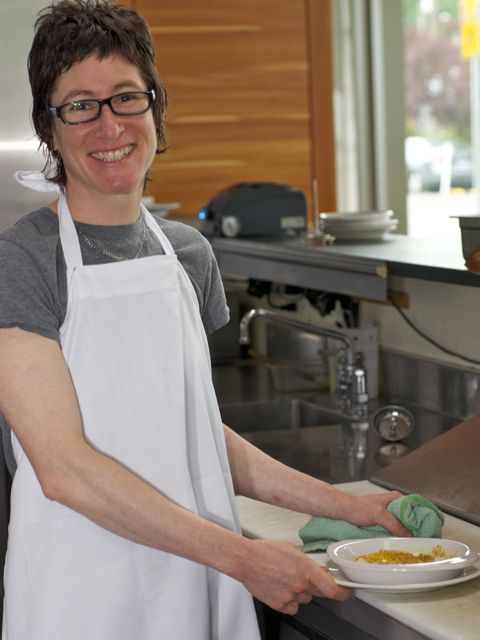
Jenn, l

Jenn2, l
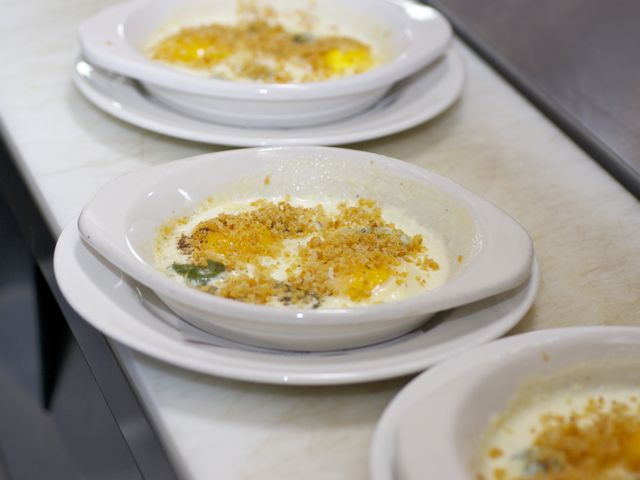
final, l
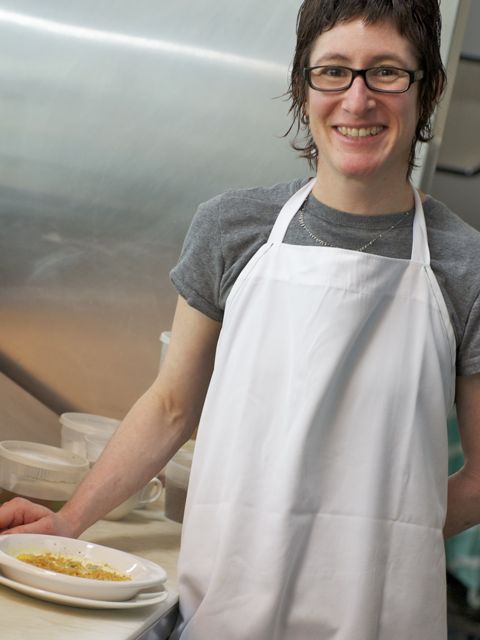
Jenn3, l

reference-image, l